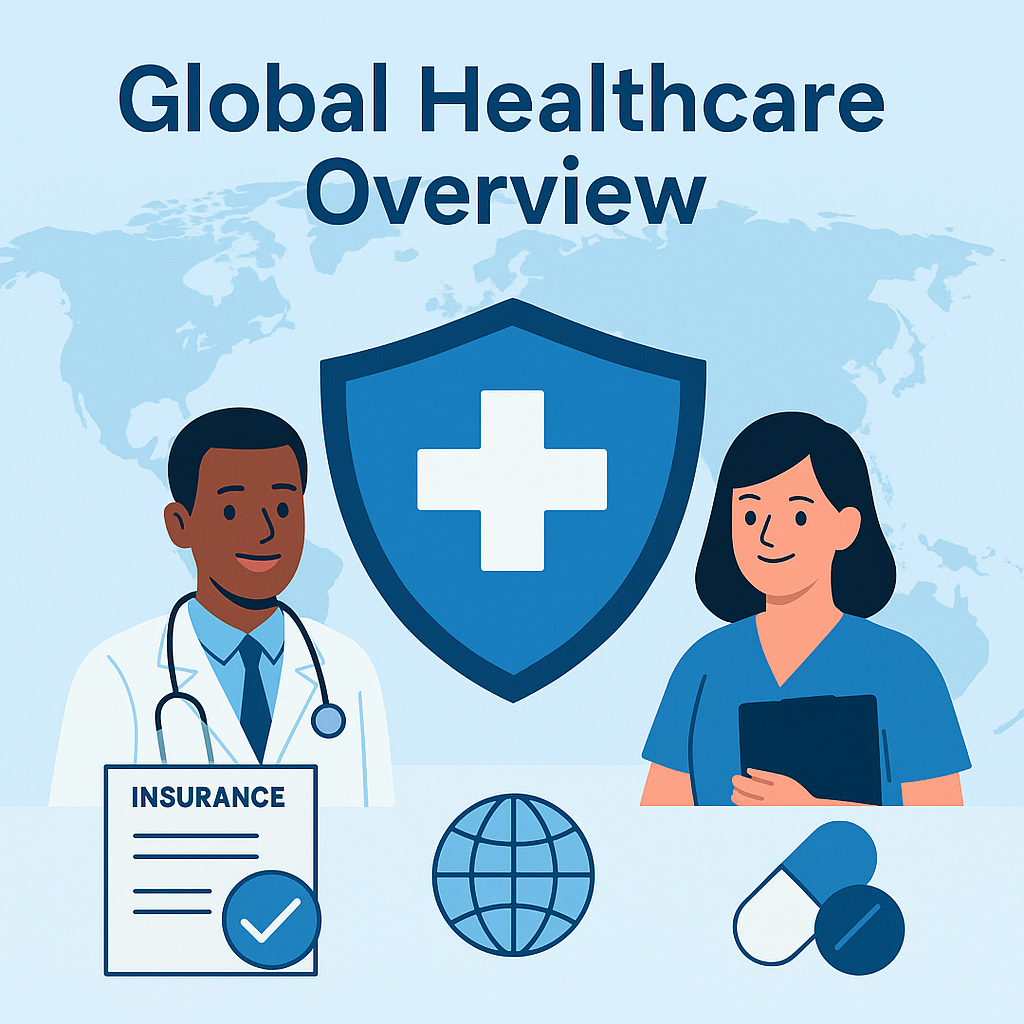
Healthcare isn’t just about access — it’s about trust, cost, and quality. Whether you’re in New York, London, Toronto, or Sydney, the system around you shapes how you live, heal, and thrive.
systems work around the world helps you:
- Make smarter insurance decisions
- Choose travel destinations with confidence
- Know what to expect in terms of cost, coverage, and care quality
Whether you’re a digital nomad, a family moving abroad, or simply researching your options, this guide will help you understand the Tier 1 country healthcare systems and what sets them apart.
🌟 What Makes a Good Healthcare System?
Before diving into each country, let’s break down what makes a healthcare system “good”:
| Feature | Why It Matters |
|---|---|
| Affordability | Can people get care without going broke? |
| Access | Are doctors/hospitals easily available? |
| Outcomes | Do people actually get better? |
| Wait Times | How quickly can someone get treated? |
| Innovation | Are new treatments available quickly? |
🇺🇸 United States: Advanced But Expensive
Type: Private-dominated with public options
Coverage: Not universal
Health spending per capita (2024): ~$12,500
The U.S. has world-class hospitals, advanced technology, and cutting-edge treatments. But without insurance, it can be brutally expensive. Even with coverage, many Americans deal with high deductibles and copays.
Main insurance options:
- Private plans (via employer or marketplace)
- Medicaid (low-income)
- Medicare (age 65+)
- COBRA, ACA subsidies
Pros:
✅ Excellent innovation
✅ Best for specialist treatment
✅ Fast access (with insurance)
Cons:
❌ Highest out-of-pocket costs
❌ 27 million+ uninsured
❌ Complex billing
📝 Want to protect yourself in the U.S.? Compare Affordable Health Insurance Plans
🇨🇦 Canada: Free at Point of Care, But Slow
Type: Universal healthcare
Coverage: Public, with private supplementals
Health spending per capita (2024): ~$6,600
Canada offers universal access to medically necessary services funded by taxes. Each province manages its own system.
Private insurance covers dental, vision, prescriptions, and faster access to some services.
Pros:
✅ No bills for doctor/hospital visits
✅ Universal access
✅ High life expectancy
Cons:
❌ Long wait times
❌ Limited access to specialists
❌ Prescription costs still out-of-pocket
✅ Good for residents, but expats may need additional coverage. See international health plans for Canada →
🇬🇧 United Kingdom: NHS Pride, Budget Pressure
Type: Public via NHS
Coverage: Universal
Health spending per capita (2024): ~$5,500
The National Health Service (NHS) offers free healthcare to all UK residents. Funded through taxes, the NHS covers GP visits, hospital stays, maternity care, and more.
Private insurance exists for faster access or private hospitals, but isn’t necessary for emergencies.
Pros:
✅ No upfront costs
✅ Trusted public system
✅ High-quality primary care
Cons:
❌ Understaffed in some areas
❌ Long waits for elective surgeries
❌ Budget cuts impacting services
🔗 Learn about private health plans in the UK to reduce waiting times.
🇦🇺 Australia: A Hybrid That Works
Type: Universal (Medicare) + Private
Coverage: Universal with incentives for private
Health spending per capita (2024): ~$6,200
Australia’s Medicare system covers most medical services and hospital care. Residents can choose to purchase private insurance for dental, optical, and private hospital rooms.
The government incentivizes private insurance through rebates and tax penalties if you don’t have it.
Pros:
✅ Strong public system
✅ Choice of public/private
✅ High satisfaction rates
Cons:
❌ Some rural shortages
❌ Private costs rising
❌ Long waits in public system
🎯 Moving to Australia? Explore expat health nsurance for full coverage.
🗺️ How Other Countries Compare (Quick Snapshot)
| Country | Type | Coverage | Avg. Wait Time | Cost (USD/year) |
|---|---|---|---|---|
| 🇫🇷 France | Universal | 99% | Short | $5,400 |
| 🇩🇪 Germany | Hybrid | 100% | Moderate | $6,200 |
| 🇸🇬 Singapore | Mixed model | 100% | Short | $4,900 |
| 🇯🇵 Japan | Universal | 100% | Very short | $4,500 |
- Compare Health Plans Now
- Pregnancy Without Insurance in the U.S. (2025)
- What Happens If You Get Hospitalized Without Health Insurance?
- Emergency Room Visits: What Your Insurance Covers
- Travel Insurance vs Global Health Plans
💡 Real-Life Example
Case: Anna, a Canadian freelancer, moved to the U.S. for a remote tech job. Her public coverage didn’t follow her. A small accident ended in a $7,500 ER bill — all out of pocket.
🔑 Solution: Anna switched to a global health insurance plan that covered both U.S. emergencies and routine visits in Canada.
Want to avoid this? Check cross-border health insurance plans
📌 Final Thoughts
Understanding global healthcare is about more than curiosity — it affects your wallet, your well-being, and even your freedom to move.
👉 If you’re living in or visiting a Tier 1 country, make sure you:
- Know the local system
- Understand insurance gaps
- Consider private/global insurance


good well writen